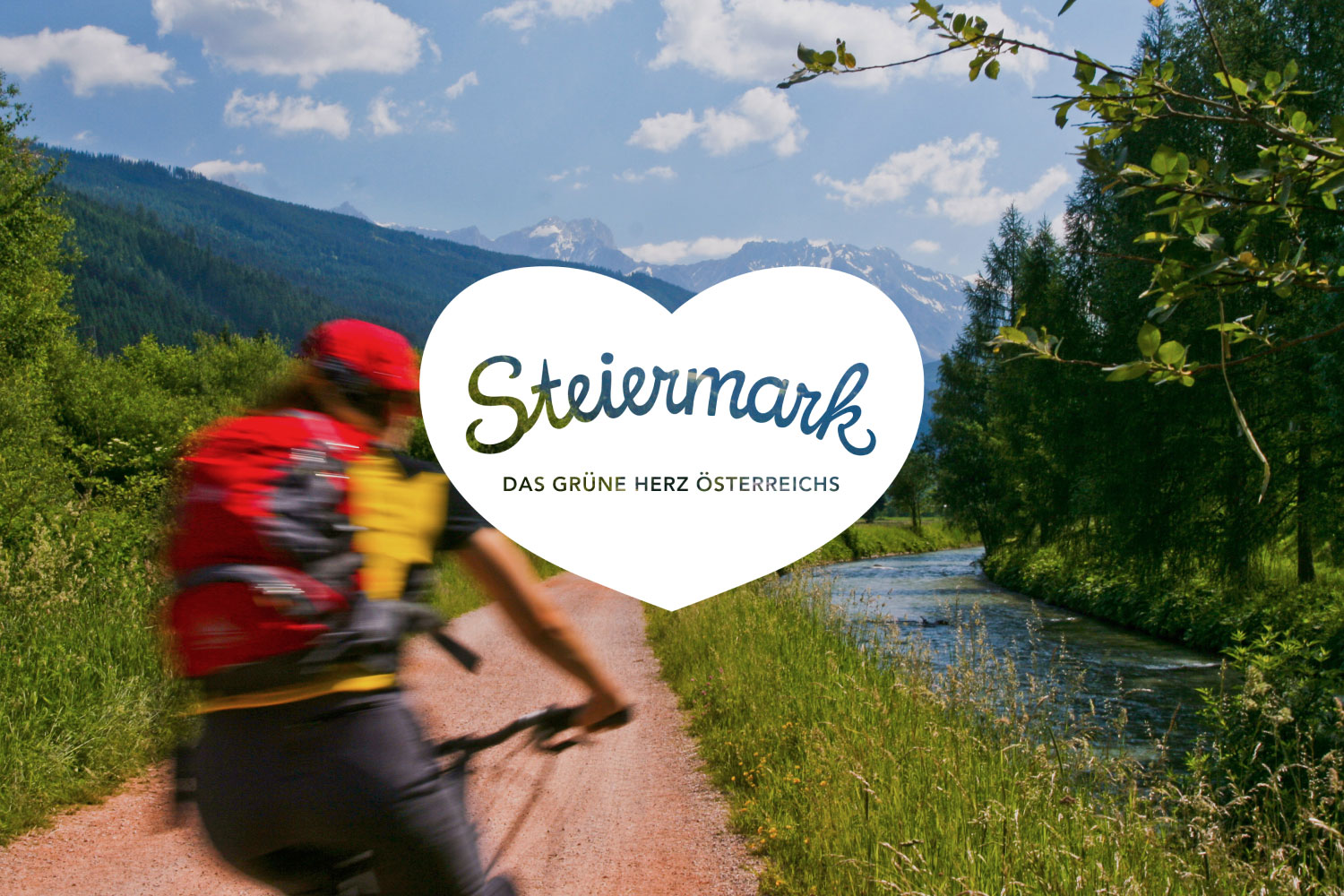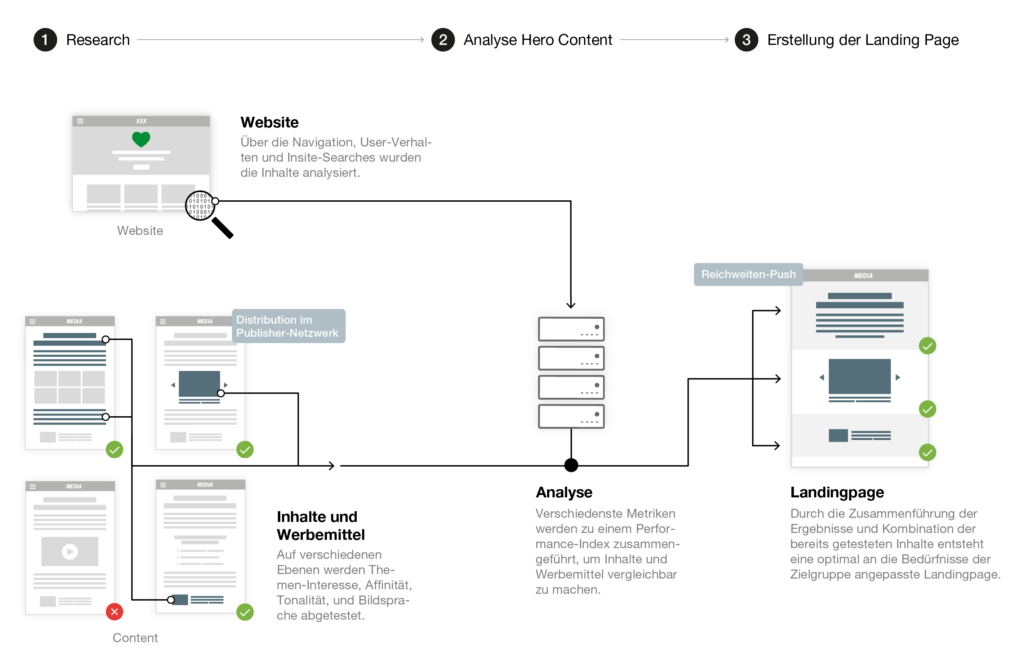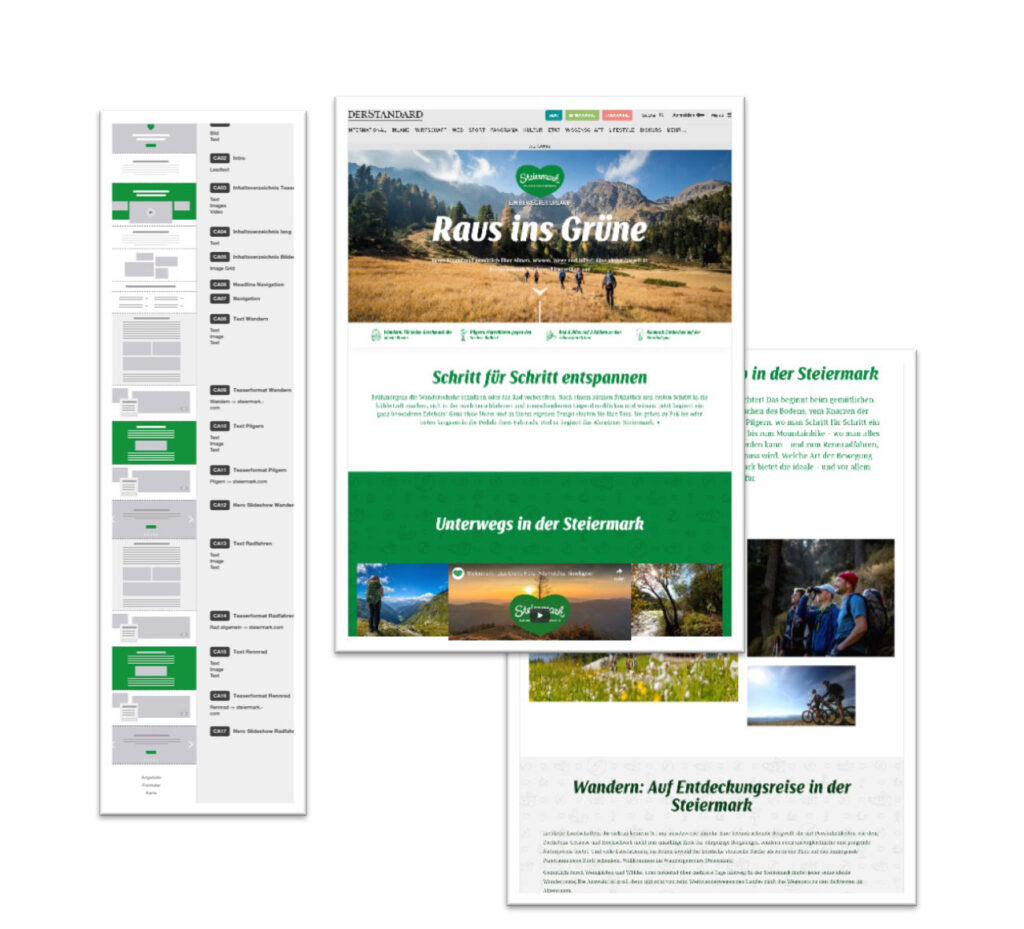
Our Datascience project with elements.at New Media Solutions for Styria Tourism
No two campaigns are the same. And yet there are projects that clearly step out of line! That’s why in our new series we want to show you those cases that stand out due to special setups, approaches and approaches. The first one is a current datascience project that we implemented together with elements for Steiermark Tourismus.
The starting position: A lot is good, specific is better
Wine tasting, hiking with alpacas, conquering the ski slopes, exploring the area by mountain bike, cross-country skiing, sleighing, relaxing at the wellness centre: Styria is an enormously diverse holiday region.
“The accompanying changes in the course of the online age have also left their mark on our website steiermark.com – a vast amount of diverse content for a very broad, heterogeneous target group”, Erich Neuhold, managing director of Steiermark Tourismus, describes the situation.
Diversity is good – after all, everyone has his or her own understanding of what relaxes him or her in their work-free time. In advertising communication, in turn, diversity is a challenge. After all, if you want to address target groups, you have to create identification potential and provide them with exactly those topics that really appeal to them. For us and the digital agency elements, this meant that we had to find a unique solution.
In the video you can see very briefly how we proceeded, further down you will find a detailed description of the project.
Step 1: Identify relevant topics and create research campaigns
Initially, elements filtered out which content areas are relevant for readers and Styria vacationers with the help of a targeted website analysis and the structuring of existing booking data.
“Thanks to detailed analyses, it was possible for us to outline a conclusive profile with regard to domain usage. Tracing typical reader paths and deriving clear recommendations for action holds a large pool of possibilities which then have to be channelled”, explains elements founder and managing director Patrick Edelmayr.
Consequently, these topics served as a basis for the further work of our team. Now it was time to produce neutral articles for our research campaign in the areas of “nature & movement”, “regeneration & wellness” and “culture & culinary”. Articles such as “Across the country over hill and dale: long distance hiking”, “6 tips for a relaxed family wellness holiday”, “10 unique UNESCO World Heritage Sites in Austria” and “The best against stress? The ‘natural pill'” were just four of many articles that we sent into the race via our premium publisher network to find out which topics attract attention in the relevant target group.
Step 2: Evaluate the research flight
In the evaluation it was important not to equate the interest of the readers in the articles (readable by teaser CTR, Dwell Time and Bounce Rate) with the interest of potential Styrian holidaymakers. After all, not everyone who would like to receive more tips to make their family holiday more relaxed would automatically want to spend this family holiday in Styria.
Styria as a holiday destination has therefore been integrated into the neutral texts via ads (service boxes, picture galleries and text ads at the end of the articles). In this way we were able to see clearly whom, on the one hand, the chosen theme appealed to and, on the other hand, who had such a strong affinity to Styria that they consequently also interacted with the ads. In this way, we were able to break down and specify the already chosen hero themes once again.
This revealed many surprises to us, elements and Steiermark Tourismus – for example that readers with an affinity for Styria are obviously very interested in cross-country skiing with the whole family.

The project phases: From content research to the landing page.
Step 3: Build landing pages the way readers want them
After it had become clear from these user signals which topics Styria Tourism should definitely pursue in its targeted communication – in other words: what the readers wanted more of – content was again created for the three subject areas (“nature & movement”, “regeneration & wellness” and “culture & culinary”). This time, however, in magazine-like formats, which were integrated into the CMS Pimcore used by Styria Tourism and provided by elements. The result was three holiday stories with the readers’ desired contents – packed in the well-known look and feel of Steiermark Tourismus.

Based on the wireframes, the landing pages were built in the customer CMS and distributed via the Content Garden publisher network.
What happened to the contents?
“Once again, we played out the stories via our publisher network fully natively on quality media in the DACH region. A native and optimized integration of landing pages in this form has never been seen before,” says our CEO, Lucas Schärf, summing up the final phase of the extensive joint project.
Use data to find out which topics readers tend to be interested in; distribute neutral content on these areas and identify which topics readers would like to read in connection with Styria; build optimized stories or landing pages that are then distributed fully native throughout the entire publisher network: This is the short summary of our datascience project.
What we take with us as learning: If you want to listen to your readers and offer them the content they really want, you can’t get around data. Our Styria case also shows how much potential there is for datascience, especially in native advertising.
We are sure: This was not our last project of this kind. And we are looking forward to new campaigns, which we will present to you in our blog series.


